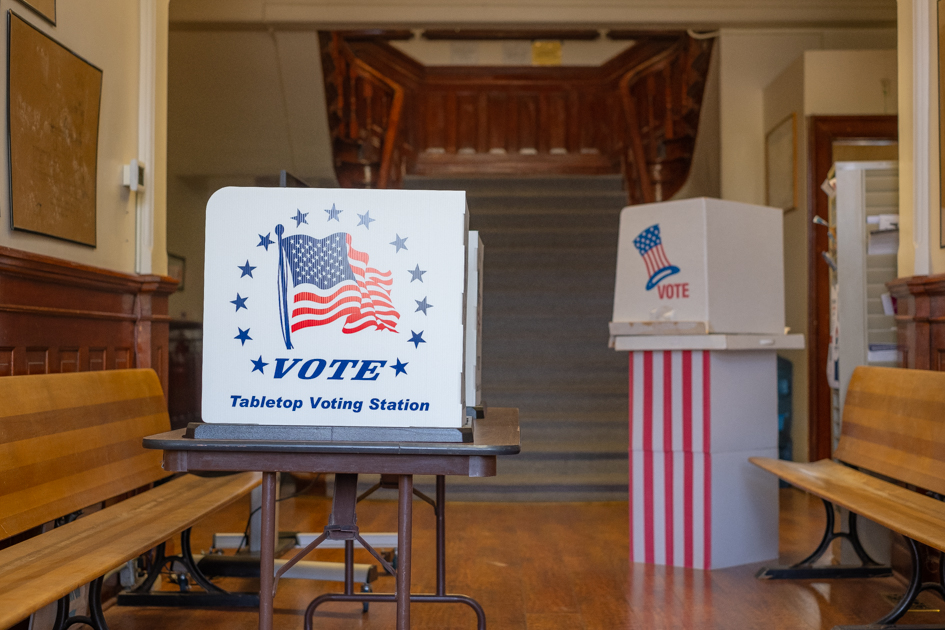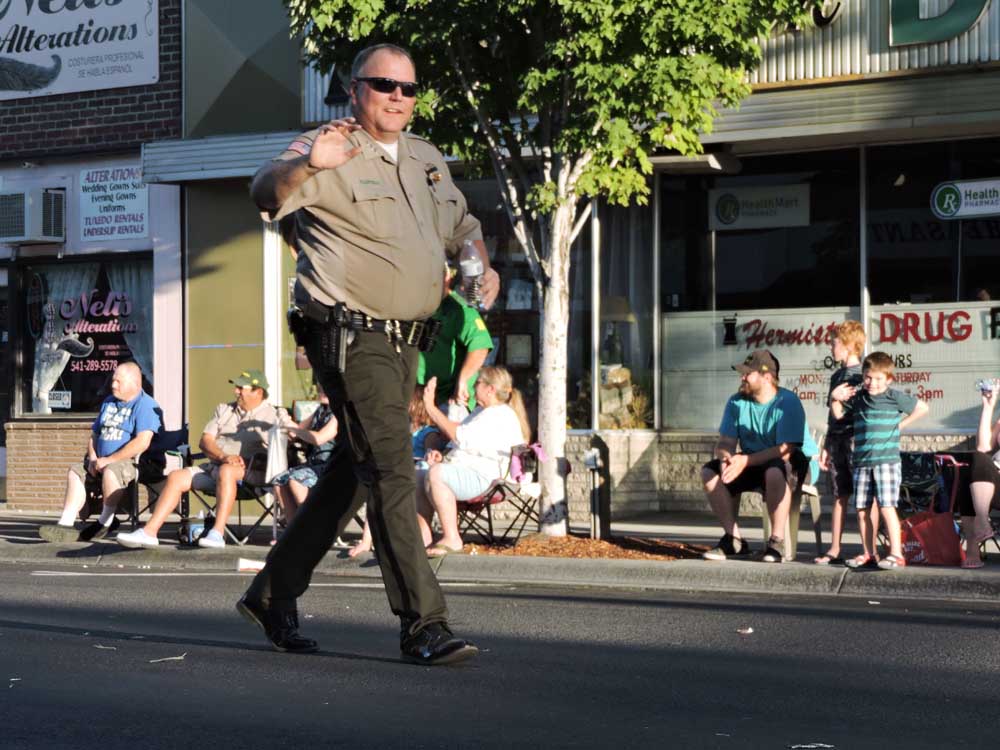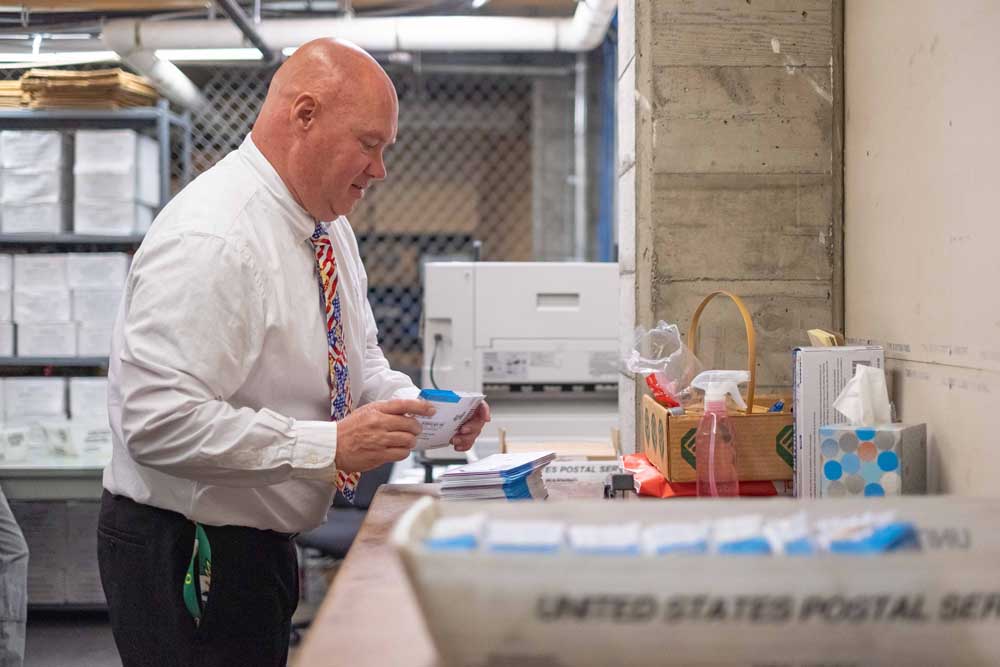Many mountain residents unimpressed by fire danger
Published 6:11 am Monday, December 20, 2004
Cutting his truck through a road unpaved and so narrow tree trunks skim med the bumper, Fire Warden Mike Jones made his trek Monday to 58481 Wildwood Loop, high on Tollgate Mountain.
It’s one of dozens of house calls Jones makes each week.
He parked the vehicle and took notes of the house shrouded by trees and the wooden deck open underneath.
Both are fire hazards.
No doubt an out-of-control fire in the area would turn the house to ashes, Jones said.
Snow crunched under his feet as he walked to the house, his eyes searching for unleashed dogs.
“I’ve been bitten a couple of times,” he said during a previous stop.
His conversation with the house’s owner, 79-year-old Randall Sweet, was short. Barely 60 seconds.
Jones said the government would pay Sweet $580 to trim back the trees and make improvements to the deck. Sweet said he was happy with the way things are, and that if his house catches fire, he plans to go with it.
Jones left, taking Sweet’s reaction in stride.
“It was obvious he didn’t want to cut his trees,” he said as he drove away. “If you start trying to pressure a lot of people, they get growly.”
Jones, a fire warden for the Pendleton unit of the Oregon Department of Forestry, has visited 970 homeowners living on the edges of Umatilla County in the Blue Mountains. He has at least 450 doors left to knock on, and two goals:
Document the existence of the homes and the likelihood that firefighters could save the structures if a fire broke out in the forest.
At the same time, he’s offering state money to homeowners willing to work to save their own homes.
“A lot of them will say, ‘Well, if it’s going to burn, let it burn.’ That’s a real problem for us,” Jones said. “This mountain hasn’t burned for over 100 years. But sooner or later, it’ll burn again.
“When it does, we’re not going to spend time protecting shelters.”
Jones is working on a plan for Umatilla County to improve one of the most dangerous and complicated situations firefighters face – putting out wildfires in areas where structures and humans mingle with wildlife and natural fuels. They’re known as wildland-urban interface zones, as identified by state law in 1997.
The danger for Umatilla County is growing in the foothills of the Blue Mountains, Jones and other state agents working on the plan say.
Because a fire hasn’t burned in the area for so long, fallen timber, tangled undergrowth and an increasing number of structures represent food for a hungry fire that could cause millions of dollars in property damages and risk hundreds of lives.
The state has only six engines to combat fires that can break out anywhere in more than 600,000 acres of forest land in the county.
Rural fire districts supplement the equipment, but those are mostly volunteer-run and the equipment is not nearly enough backup.
To help reduce the danger, the county is distributing more than $800,000 in federal grants to help private landowners with fuel-reduction projects.
Such projects involve trimming trees near homes and clearing brush, creating a 100-foot zone around homes and garages that would be free of fuel for a fire.
For their work, landowners can receive from $210 up to $580.
Although the work is required by state law, there is no fine for homeowners who don’t comply.
If a fire does break out, however, and a landowner’s property contributes to the cause or spread of it, the state can collect up to $100,000 from the landowner to help pay for the costs of fighting the fire.
The Oregon Department of Forestry, along with several county agencies and the Confederated Tribes of the Umatilla Indian Reservation, held five public meetings last month to spread word of the program.
In Meacham, 13 residents attended. In the Weston Mountain/Tollgate area, six came. Five showed up in Ukiah; eight in Pilot Rock and three from the CTUIR.
All said they were worried, and most were already participating or intending to participate in the fuel-reduction program.
But at each site, the same concerns were expressed:
How do you convince neighbors to get involved? What to do about recreational visitors (versus year-round residents) who only visit their cabins and homes a few times per year?
The county doesn’t track the number of people and homes in the mountains specifically, according to Paul Chalmers, director of the county’s assessment and taxation.
But, anecdotally, the number of people on the mountain has grown considerably, according to Marge Roff, a principal broker of Roff Real Estate in Milton-Freewater.
Property, particularly if it has water, sewer and power, is attractive to many people, she said. Housing prices in the Weston Mountain/Tollgate area range widely, from $50,000 to $250,000.
“There are some who want to live on top of the mountain because they’re into snowmobiling, skiing, snowboarding, they want places to go spend leisure time,” Roff said. “Other people who live farther down the mountain, at milepost 10, do so because they want the privacy, seclusion and they want away from the congestion of the (Walla Walla) valley.”
It’s that penchant for privacy that frustrates Jones and his efforts to protect the mountain.
People don’t want to talk to him, don’t want his help. Often, gates and no trespassing signs keep him from even making it to the front door.
When he does make contact, he often finds homeowners reluctant to buy into the idea of a no-burn zone.
“They think if you come in and do this you’re taking away the natural beauty of the forest,” Jones said. “Well, if it’s natural, it’s going to burn. And it’ll be a nightmare.”
As Jones drove on to the next property last Monday, he pointed out white narrow plastic markers along the road, bunched together like wildflowers. Each had a house number on it but were far from the actual homes, which hid down long, branching, unpaved paths into the forest.
Fire engines wouldn’t have an easy time finding a house, even if they could fit down the road.
Most won’t.
Talking about an empty red cabin found deep back one of the paths, Jones said there would be no way he could send a truck to protect it.
“This one would probably burn down,” he said.





